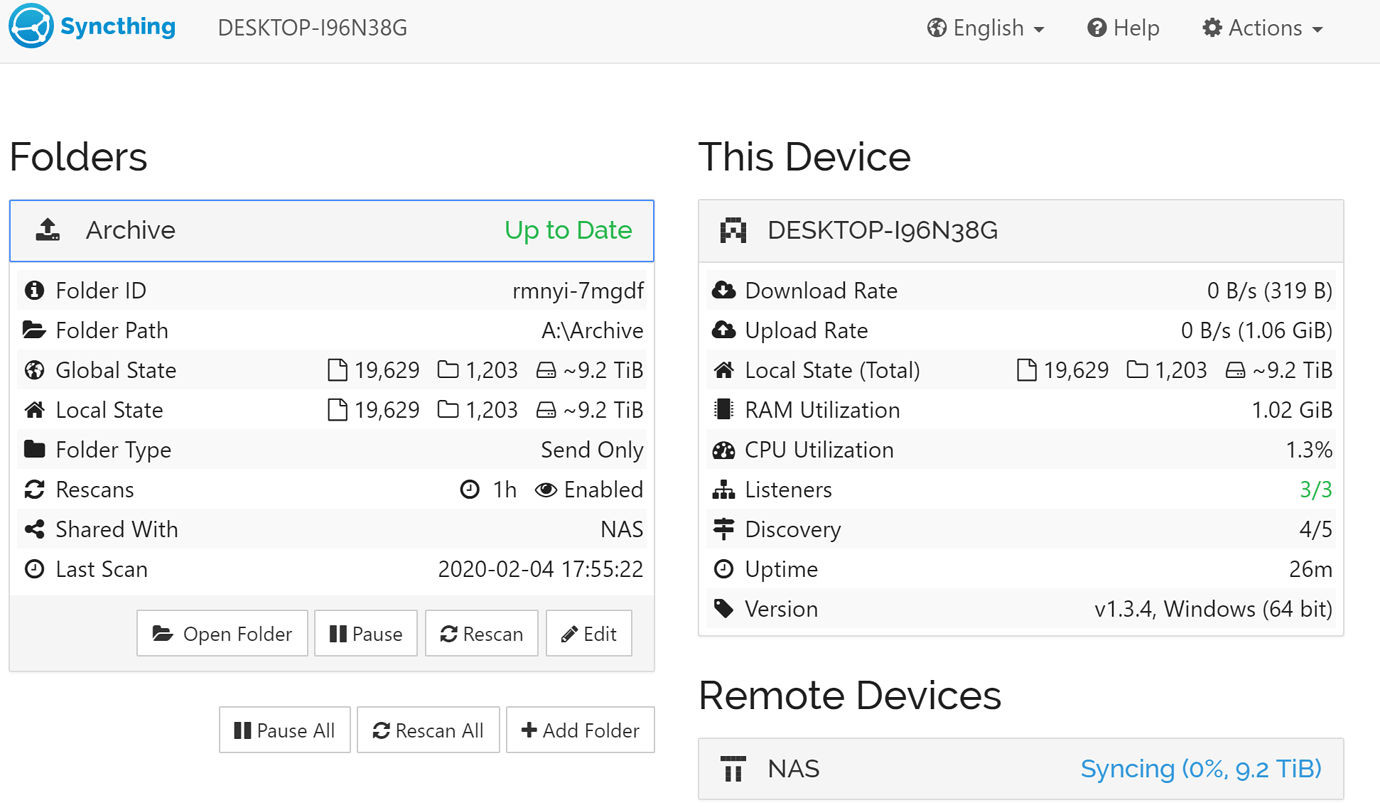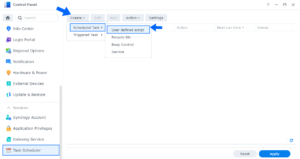

Rsync -avu -stats -numeric-ids -progress -e "ssh -i /root/.ssh/id_rsa -T -o Compression=no -x" /mnt/user/Videos/ > /boot/logs/cronlogs/BackupNAS_Videos.logĮcho "Copying new files to Movies share = $(date)"Įcho "Copying new files to Movies share = $(date)" > /boot/logs/cronlogs/BackupNAS_Summary.logĮcho "Copying new files to Movies share = $(date)" > /boot/logs/cronlogs/BackupNAS_Movies.log Rsync -avu -stats -numeric-ids -progress -e "ssh -i /root/.ssh/id_rsa -T -o Compression=no -x" /mnt/user/Pictures/ > /boot/logs/cronlogs/BackupNAS_Pictures.logĮcho "Copying new files to Videos share = $(date)"Įcho "Copying new files to Videos share = $(date)" > /boot/logs/cronlogs/BackupNAS_Summary.logĮcho "Copying new files to Videos share = $(date)" > /boot/logs/cronlogs/BackupNAS_Videos.log # echo "Waiting for BackupNAS to power up."Įcho To: > /boot/logs/cronlogs/BackupNAS_Summary.logĮcho From: > /boot/logs/cronlogs/BackupNAS_Summary.logĮcho Subject: MediaNAS to BackupNAS rsync summary > /boot/logs/cronlogs/BackupNAS_Summary.logĮcho > /boot/logs/cronlogs/BackupNAS_Summary.logĮcho "Copying new files to Pictures share = $(date)"Įcho "Copying new files to Pictures share = $(date)" > /boot/logs/cronlogs/BackupNAS_Summary.logĮcho "Copying new files to Pictures share = $(date)" > /boot/logs/cronlogs/BackupNAS_Pictures.log

Ipmitool -I lan -H 192.168.1.16 -U admin -P xxxxxxxx chassis power on #description=This script backs up shares on MediaNAS to BackupNASĮcho "Starting Sync $(date)" > /boot/logs/cronlogs/BackupNAS_Summary.log The cleanup script differs from the weekly backup script on in the addition of the -delete or -delete-after parameter on the rsync lines. Again, choose the one for your Synology architecture.I'm trying to do the same thing.
#Synology syncthing download#
Download the appropriate syncthing-inotify binary from github.Copy the syncthing binary over the one in /var/packages/syncthing/target/bin.Your Synology architecture can be discovered from this page What kind of CPU does my NAS have Download the appropriate syncthing binary from.If you don't take the right precautions and wipe out your data that's your problem.) You should have backups and test new processes on test data. Your data is your data and if it's important to you.
#Synology syncthing update#
If you update the synocommunity package these modifications will be removed and you'll need to repeat these steps. (Mind you, I have tested this on ds1515, and ds412+. I have been running the native Syncthing file watcher since version 0.14.47 with no ill effects. Update! My current version of Syncthing is version 1.0.0.
#Synology syncthing upgrade#
I will retain the following steps in case you can't upgrade for some reason or you choose to go this route instead. I doubt that was related to the watcher, though. With my large data set I haven't received any errors besides the common insuficient permissions. I would probably recommend using it, since it requires less configuration than inotify. So far it seems to work just as well as syncthing-inotify. I am still in the process of testing it myself. It will also be enabled by default and you don't want to enable syncthing-inotify in that case. This is not only a waste of time, but also process intensive.Īs of version 0.14.47, Syncthing now includes a file watcher built-in. Without it, every shared directory is fully checked on a schedule. The package did not include the syncthing-inotify binary, which watches changes in files.

Syncthing can be installed from, but it poses two big problems. More information is available from the official website. Syncthing is a cross platform tool for syncing files to other machines in real time. Scripts and tips for improving the operation of Syncthing on a Synology Diskstation


 0 kommentar(er)
0 kommentar(er)
